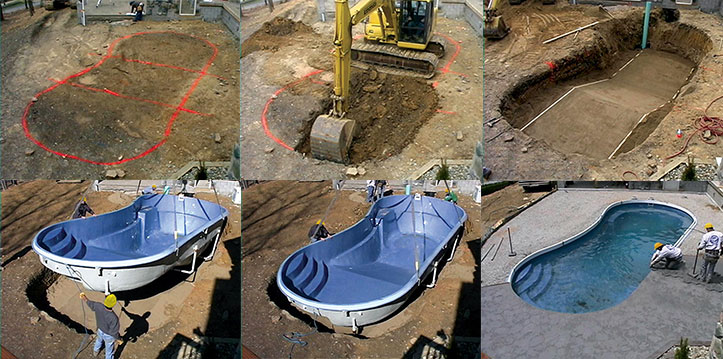When considering your own in-ground swimming pool, you have no doubt put endless research into all of the fun design decisions. You have spent hours contemplating materials, styles, and the huge variety of extra features, along with the associated costs of each. One aspect of pool ownership that is easy to overlook if you are a first-time buyer is the cleaning and general maintenance of your pool. However, not all maintenance solutions are equal and there is a particular difference depending on the type of pool you have. Factoring the differences between concrete and fiberglass pools when making your final choice will help you budget your time and finances accordingly.
Standard Maintenance Procedures
With any pool, it is important to make sure you remove debris on a consistent basis. A good routine to get used to would be to skim the pool daily, vacuum weekly, and check chemical levels once per month. To improve chemical balance even more, it is considered a best practice to check chlorine levels and pH 2-3 times per week and run the pool filter 6 to 8 hours each day.

Fiberglass | Montego in Crystite Classic Shale Gray
1) Surface Porosity
Fiberglass pools are made from a smooth, non-porous material, which decreases the likelihood that algae and bacteria will find a place to grow. Since concrete is a more organic material, it has more variation in its surface texture. This requires more intensive cleaning as well as resurfacing or acid washing every few years to prevent the growth of algae and bacteria as well as concrete cancer.
2) Cleaning Products & Tools
Due to the more intense cleaning procedures needed for concrete pools, it is best to have a stiff-bristled brush to scrub with along with a vacuum to remove any debris from the bottom of the pool. If algae does infiltrate a concrete pool, you will have to perform an acid wash, which is an incredibly harsh cleaning process. To avoid this, it is very important to keep up with concrete pool maintenance.
With fiberglass pools, however, it is best to avoid any severe cleansers in order to keep the surface of the pool in tact. Abrasive brushes or polishers would scratch pool walls and possible disturb the chemical balance of your pool. The only maintenance equipment needed for fiberglass pools is a skimmer for debris-removal and a vacuum to clean the bottom.
3) Chemicals
Concrete pools require a fair amount more chemical usage due to algae prevention and other reactions that occur between the surface and other particles in the pool. Calcium hardness must be monitored as well as the addition of algaecide, along with an obligation to resurface on average every 10 years. Where all of these factors are not needed for a fiberglass pool, they must be built into your budget if you choose to go with concrete.
4) Draining
Only in the rarest of rare cases would you may have to drain a fiberglass pool for proper cleaning. However, draining is necessary for the maintenance of concrete pools. This process is required when repairing cracks or acid washing the concrete surface. Anytime drainage is needed, it is best to to consult a professional to complete the process properly and best protect your investment.
Whatever your choice, you will surely enjoy the backyard oasis that your own in-ground pool will create. We just like to help out and make sure you don’t forget any important details in the process so that you are fully satisfied win your pool is finished. Learn more about the differences in maintenance between fiberglass and concrete pools in our Plan Your Pool section.







Join the discussion